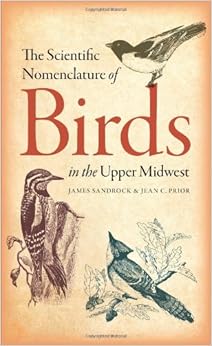 |
| The Sibley Guide to Birds, Second Edition |
I figured what better way to start off this blog than reviewing what is likely the most anticipated new bird book of the last few years, The Sibley Guide to Birds, Second Edition.
First, a little personal history with Sibley's book. Back in 2000 when it was first released, I had just started working at a Barnes & Noble bookstore in a Minneapolis suburb. I was not a birder, but the book caught my attention due to the large number of copies we received and how many copies we sold those first few weeks.
Fast forward a few years and I suddenly found myself heading on a camping trip to western North Dakota and I decided that I wanted to do some birdwatching (1st time ever) and I chose Sibley as my guide.
Well, the camping trip ended up being hot, buggy, and just plain miserable. However, I did end up finding a few birds and I'll forever remember seeing a couple of Spotted Towhees cooling off in the water from a leaky water faucet, and then sprinting back to the campsite and flipping through the pages until I finally ID'd those little birds.
That book has been with me through the first 8 years of birding and will always be one of my prized possessions, even if the cover is held together by duct tape.
Anyway, back on topic:

To begin with, let's discuss the obvious changes to the new edition.
- Most revisions were done only to correct minor flaws like shading, contrast, and small changes to color patterns.
- About 20% of all the paintings received, according to the author, "substantive revisions." These revisions were made to fix errors with color patterns, tail shape, and bill shape. Sibley states that these changes were made as the result of new information (at least to him), more personal experience with those species, and better reference material.
- Over 600 new paintings featuring 111 rare species were added.
- Range maps were updated to show changes in distribution Sibley also added range maps to show subspecies distribution and in cases where birds might only be found in a small part of the country, the range map is "zoomed in" to illustrate the range better.
- Lots of new information about habitat and behavior, along with tips on finding birds was added.
- Many, is not most, of the paintings were enlarged slightly.
After almost 14 years since the first edition, anyone interested in birding knows that some species ranges have moved around a little bit and some (I'm looking at you Mr. Eurasian Collared-Dove) have changed quite noticeably. So, updating the range maps is a pretty important first step in issuing a new edition.
Sibley also added 111 new rare species to the second edition in response to some species that were hardly seen back in 2000 now seem to be spotted annually. I also believe that the addition of numerous rare species is a direct response to the reason many "hardcore" birders prefer the National Geographic Guide to Birds: "A guide to the birds they don't know much about."
One change, in regards to the newly added information, that I noticed immediately, was the change in layout and typeface. For the most part, that layout changes are all very positive and give the book a very clean appearance. However, the new typeface is quite thin and when light hits that nice glossy white paper, it becomes difficult to read. I've read rumors that the typeface could be changed in a later printing, but I think that would also force a change in layout, so I would not count on that happening.
The rest of the changes are not likely to be noticed by novice or casual birders, but it is nice to know that he is constantly critiquing his own work and fixing it when it needs to be.
The book is stunning and deserves much praise. Yet, for all the positive changes, there are a few problems that seem to have caught the attention of numerous birders and reviewers and they need to be mentioned.
- Lack of scientific names for the numerous subspecies of birds. This was discussed previous to the second edition and it is being discussed again. Sibley posted his thoughts on his blog a few years ago and I would think that response still applies.
- In some cases, a very noticeable over saturation of dark colors. While I didn't find those few cases to be anything that would cause me to put the book on my shelf and wait for a second printing, a couple of them (Scarlet Tanager and Eastern/Western Bluebird are obvious examples) should maybe be reviewed and changes be considered for later printings.
David Sibley did
post a comment on one blog regarding the color issues. He appears to be standing behind the changes for the time being.
For now, my trusty 1st edition sits in my truck ready and willing to help me in the event of some lost bird finding it's way to Northwest Iowa while I keep the second edition by my bedside to flip through and admire before turning off the lights.
It's a beautiful book, but like all things it is not perfect, and I can't help but think that many of the reviews focusing on production issues are a result of people expecting perfection and being let down.

